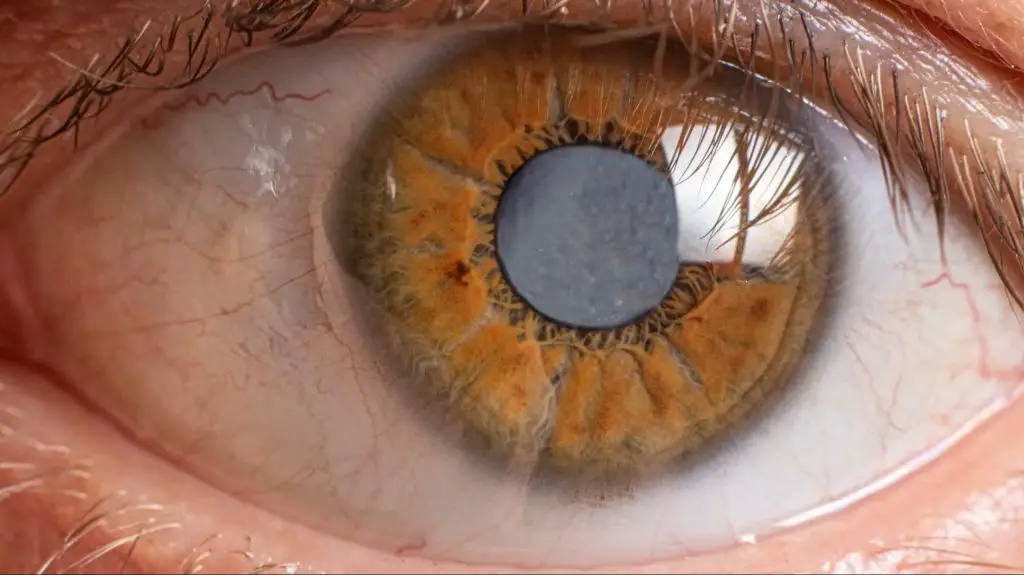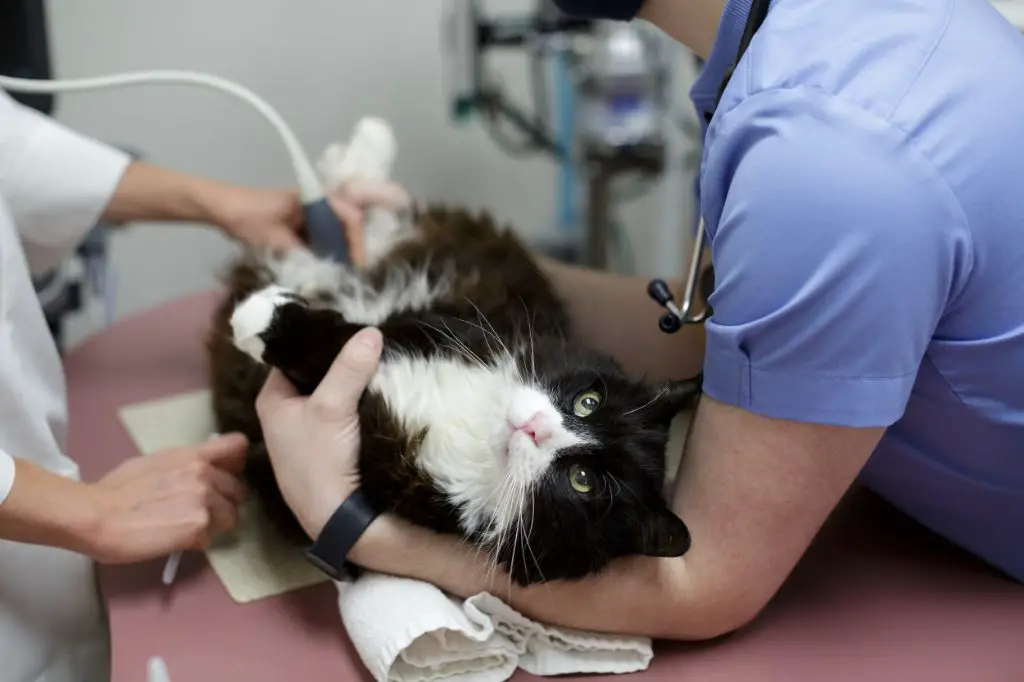Cataracts are a clouding of the natural lens in the eye, causing blurred vision. In cataract surgery, the eye’s natural lens is removed and replaced with an artificial intraocular lens to restore vision. The recovery time after cataract surgery is usually around 4-6 weeks. During this time, it’s crucial to follow post-operative restrictions and care instructions from your eye doctor to allow proper healing and avoid complications.
Bending Restrictions After Surgery
Bending is typically restricted for 1-2 weeks after cataract surgery to allow the eye to heal properly and reduce the risk of complications (1). When you bend over, pressure builds up inside the eye which can lead to fluid leakage, inflammation, retina detachment, and other issues if done too soon after surgery (2). Doctors advise avoiding bending below waist level or picking up heavy objects during the recovery period.

Cataract surgery involves delicate incisions in the eye’s natural lens which need time to seal and close up. Bending and pressure can cause the incision to open up again. The natural fluid inside the eye may seep out leading to complications like eye infection, swelling, poor vision, and necessitating additional surgery (1). Restricting bending allows the incision to fully seal and stabilizes the artificial lens implant.
Retinal detachment is another serious risk if bending too soon. The rapid pressure changes can dislodge the retina, causing blindness if not treated promptly. So doctors recommend waiting 1-2 weeks before bending fully to avoid detachment (2). The bending restrictions are in place for patient safety and to minimize risks during the post-op healing process.
Risks of Bending
Bending over too soon after cataract surgery can lead to increased pressure in the eye. According to the American Academy of Ophthalmology, positions that put your head below your waist, such as bending over, can increase eye pressure and should be avoided initially after surgery.[1] The increased pressure places stress on the incision and can lead to wound leakage. Wound leakage occurs when the incision reopens, allowing fluid to seep out.
Bending can also lead to displacement or dislocation of the intraocular lens (IOL). The IOL is the artificial lens implanted during cataract surgery to replace the cloudy natural lens. If the IOL shifts out of position due to bending too soon after surgery, it can negatively impact your vision. Displacement of the IOL often requires a second surgery to reposition or replace the IOL.
To avoid these risks, follow your surgeon’s instructions on post-op bending restrictions carefully. Every patient heals differently, but you’ll typically need to avoid bending for at least 1-2 weeks after cataract surgery.
What to Do If You Accidentally Bend

If you accidentally bend over after your cataract surgery, try not to panic. Gently and slowly return to an upright position. Avoid any sudden movements or strain. According to [https://www.aao.org/eye-health/ask-ophthalmologist-q/eye-surgery-bending], bending can potentially displace the gas bubble or other contents of the eye, but slow and careful movements can minimize further issues.
Contact your doctor right away if you experience any concerning symptoms after an accidental bend. Symptoms to watch for include pain, discharge, bleeding, loss of vision, seeing floaters or flashes of light. Your doctor can examine your eye and ensure proper healing. Avoid rubbing, pressing or touching the operated eye. Follow your doctor’s post-op instructions carefully, including restrictions on activities.
While bending risks complications, occasional accidental bending is unlikely to negatively impact your long-term recovery and vision outcome if you return to upright position slowly. However, avoid repeated or sustained bending during the recovery period. Wait for your doctor’s go-ahead before resuming any bending activities.
Preventing Accidental Bending
It’s important to take precautions to avoid accidentally bending over after cataract surgery, as bending can increase eye pressure and displace the lens implant, leading to complications. Here are some tips to help prevent accidental bending:
Use aids like grab bars, rails, and reaching tools to pick up objects off the floor so you don’t have to bend over. Install grab bars in the shower/bathroom to hold on to while getting dressed. Use a long-handled shoehorn to put on shoes without bending.
Wear an eye shield when leaving the house to protect your eyes if you do accidentally bend over. Eye shields prevent direct pressure on the eye and keep the eyelids closed if squeezed.
Take extra time and move slowly when changing positions. Go from sitting to standing gradually to avoid quick, jerky movements. Sit down to put on pants or shorts. Roll socks onto your feet rather than bending over.
Avoid activities requiring extensive bending like gardening,vacuuming, sweeping, pet care, or making beds early in recovery. Ask for help with tasks that require bending until your doctor says it’s safe.
Rearrange items in your home to minimize bending, like moving frequently used pots and pans to higher cabinets. Keep clothes and shoes within easy reach. Place a trash can in every room.
Exercises to Avoid

After cataract surgery, it is important to avoid exercises that involve bending over or looking down for 4-6 weeks. These types of movements can increase eye pressure and put stress on the incision site, increasing the risk of complications like retinal detachment or lens dislocation.
Some exercises to avoid include:
- Touching your toes / deep forward folds
- Sit-ups or crunches
- Looking down during yoga poses like downward dog
- Pilates exercises involving being upside down
- Weight lifting that requires straining or lifting heavy loads above the head
Instead, focus on safe exercises during recovery like walking, swimming, stationary cycling, and gentle yoga or stretching. Check with your surgeon about when you can return to your normal exercise routine, which is usually 4-6 weeks for most people.
Some good exercises after cataract surgery include:
- Walking
- Stationary biking
- Swimming
- Light yoga stretches
- Core exercises lying on your back like knee pulls
The key is choosing low-impact activities that don’t involve straining or pressure on the eyes. Listen to your body and ease back into exercise gradually under your doctor’s guidance.
Lifestyle Adjustments
Cataract surgery requires some modifications to your normal daily activities for the first few days after the procedure. Here are some tips to help with common tasks:
Dressing: Have clothes laid out and ready so you don’t need to search through drawers and closets. Sit down to get dressed and avoid excessive bending. Consider slip-on shoes or clothes with elastic waistbands. You may want to wear button-up shirts to avoid pulling anything over your head.
Showering: Be very careful not to get water or soap in your eyes. It may help to place a washcloth over your eye as added protection. Avoid bending over in the shower. Consider a shower chair or handheld showerhead. Only wash your hair by leaning back, not forward.
Picking up items: Avoid picking anything up off the floor. Use a grabber tool if needed. When lifting objects from tables or counters, first bring them close to your body to avoid excessive leaning. Lift with your legs, not your back.
Cleaning: Hold off on major cleaning tasks. Limit efforts to light dusting. Have someone else handle vacuuming, mopping or anything requiring strenuous activity.
Driving: Do not drive until cleared by your doctor, usually around 1 week after surgery. Limit driving to essential trips at first. Wait until you feel completely comfortable before driving at night.
With some small adjustments, you can safely perform daily activities while avoiding too much bending and straining your eyes after cataract surgery.
Returning to Normal Activities

After cataract surgery, it’s important to take things slowly when returning to normal daily activities. Here is an overview timeline for safely resuming bending, exercise, work, and driving:
Bending: Avoid bending over or straining for at least 1 week after surgery. After 1 week, bending from the knees is okay, but avoid bending from the waist for 2 weeks. Use a reacher tool if needing to pick items up from the floor.
Exercise: Avoid strenuous exercise for 1 week. After 1 week, you can do light exercises like walking. More intense exercise like weightlifting should wait until at least 2 weeks post-op. Always avoid activities with rapid head movement.
Work: Most people take at least 1 week off work after cataract surgery. If you do office-based work, you may return after 3-4 days. Avoid manual labor, heavy lifting, and straining for 2 weeks.
Driving: It’s best to avoid driving for at least 1 week after cataract surgery. Double check with your surgeon, but most patients can resume driving 1 week post-op, once vision has stabilized.
When easing back into activities, listen to your body. Stop if you feel pain, pressure, or discomfort in the eye. Check with your ophthalmologist if you have any concerns. With patience and by following your doctor’s recommendations, you can safely get back to your normal routine after cataract surgery.
Sources: https://www.mces.melbourne/news/top-5-tips-to-minimize-cataract-surgery-recovery-time/, https://www.aao.org/eye-health/ask-ophthalmologist-q/eye-surgery-bending
Seeking Medical Care
Most patients heal well after cataract surgery, but it’s important to watch for concerning signs that may indicate a need for follow-up care. Contact your ophthalmologist right away if you experience any of the following:
- Severe pain in the eye
- Significant loss of vision
- Redness or discharge from the eye
- Flashes of light or increased floaters
- Swelling around the eye
Your doctor’s office should provide instructions for contacting the on-call ophthalmologist after hours or on weekends if you have any urgent concerns. Many practices have 24-hour answering services. Calling sooner rather than later can prevent minor issues from becoming serious complications. Don’t wait until your next scheduled follow-up appointment if you experience troubling symptoms.
For non-emergent questions about your recovery, call your ophthalmologist’s office during regular business hours. The staff can help determine whether an in-person visit is recommended based on your symptoms. Have your medication list ready to provide details if relevant to your concern. Keeping the lines of communication open with your surgeon’s team ensures optimal healing.
Conclusion
Bending and heavy lifting after cataract surgery can lead to complications like dislocation of the intraocular lens or increased eye pressure, so it’s critical to follow your doctor’s post-op instructions closely. If you accidentally bend soon after surgery, contact your eye doctor right away to get examined. To prevent accidental bending, have someone assist you with tasks that require leaning over, avoid picking up heavy objects from low surfaces, don’t look down frequently, and skip exercises that involve forward folds. With some temporary lifestyle adjustments, you can ensure proper healing and return to your normal activities once your doctor gives the all clear. Being mindful of bending and lifting restrictions in the days and weeks after surgery will help you avoid vision-threatening complications and support the best possible outcome.

